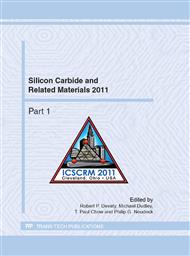p.569
p.573
p.577
p.581
p.585
p.589
p.595
p.601
p.605
Characterization of Photoelectrochemical Properties of SiC as a Water Splitting Material
Abstract:
Hydrogen energy attracts attention as an eco-friendly energy resource. The water splitting by semiconductor materials can generate hydrogen without CO2 emission. However, the hydrogen conversion efficiency using conventional materials is not high enough, or the materials corrode easily even if they show high efficiency. On the other hand, silicon carbide (SiC) is expected to be a water splitting material showing high conversion efficiency without corrosion. In this study, we characterized band edge potentials for 4H-, 6H- and 3C-SiC, and we revealed that they are capable of water splitting. We also estimated conversion efficiencies by photocurrent measurements in electrolytes for bulk 4H- and 6H-SiC.
Info:
Periodical:
Pages:
585-588
Citation:
Online since:
May 2012
Authors:
Keywords:
Price:
Сopyright:
© 2012 Trans Tech Publications Ltd. All Rights Reserved
Share:
Citation:


